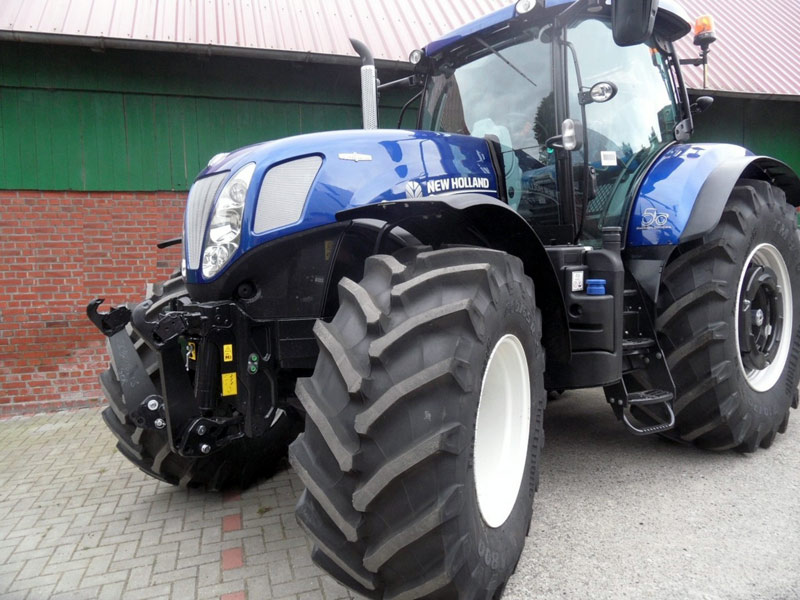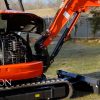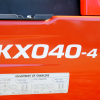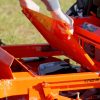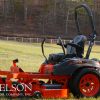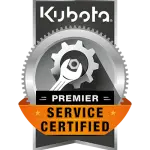Tires are critical to the effectiveness of your tractor and impact a wide variety of factors, including carrying load, soil compaction, power and much more. Knowing how to choose your tires will allow you to make the most of your tractor, reducing fuel usage and keeping the land in good condition.
Keep these features in mind as you browse the many tire options available.
Decode Your Tire
Each tire has seemingly random numbers and letters printed on the side of it—but these numbers are not random. They tell you everything you need to know about the anatomy of that tire.
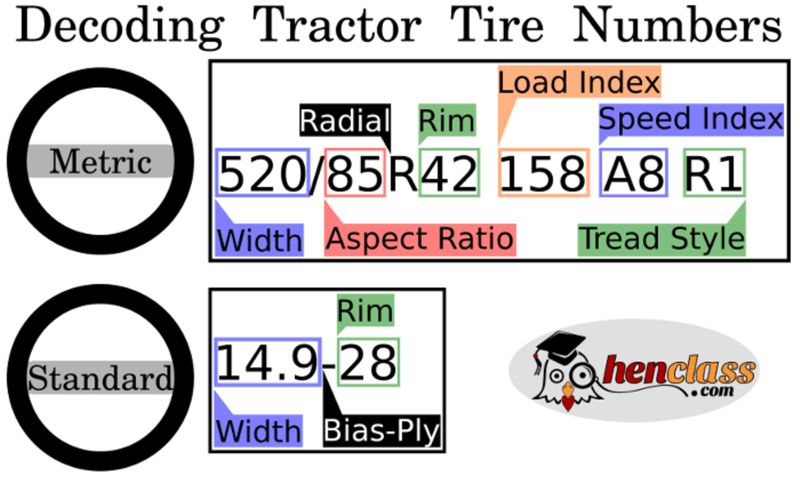
[Image – Source: Country Living]
Tire Width
Wider tires give you more flotation in sandy or muddy soil. There is less ground pressure per square inch because the weight of the tractor is spread out over a larger footprint. If you have wider tires, you have more traction. The more surface of the tire contacting the ground, the greater the traction. A wider tire is heavier, takes more horsepower to turn, and is more susceptible to cuts and snags simply because you have more tire on the ground.
Load Index (Ratings)
Each tractor has an overall load rating, which includes the rating for the axle, wheel and tires. This determines the maximum carrying capacity of any component you use, making it an important detail to consider. Start your tire search with the international load index, which will help you figure out which tires you need based on the amount of weight you plan to carry on a regular basis.
As you start to look for tires, you’ll be able to find the load index number on the outer edge of the tire itself—as explained above. Otherwise, you can always ask your sales associate.
Style: Radial vs. Bias
All tires are constructed one of two ways: radial or bias. These two styles differ in a few ways:
Bias tires tend to be less expensive, with a durable sidewall that can withstand damage from most things on the ground, like rocks and branches. This makes them more widely used than radial tires, which are more expensive.
Still, the benefits of radial tires are many, including a longer tread life and greater potential fuel efficiency because they can be run with lower air pressure, which also increases traction. They also tend to be more durable on pavement and compact the soil less, while providing a more comfortable ride for the user.
To determine if a tire is bias or radial, refer to the indicators below:
- “-” Indicates bias—I.E. 16.9-30
- “R” indicates radial—I.E. 18.4R30
Tubes
All tractor tires are either tubed or tubeless. The tubes live inside the tires and are generally required when a tire needs liquid ballast, which is dictated by the tire itself and your personal preference. Tubeless tires tend to last longer and are easier to repair—when a tubed tire is punctured, you’ll need to remove and disassemble it to repair both the tube and the tire itself. Your decision to choose tubed versus tubeless is a personal one, unless the tires you need or want require tubes.
Tire Pressure
Tire pressure affects how effectively your tractor navigates the terrain, including, soil compaction, driveline and fuel usage. This makes it an important element to consider when buying and maintaining tractor tires. The first thing you need to know is that high pressure tires increase ground compaction, reducing efficiency, versus low pressure, which reduces compaction and increases efficiency.
To determine the best inflation for your tires, it’s best to refer to manufacturer recommendations. Most major brands share their pressure charts for each particular tire, taking into account load rating and tread. See below for a variety of tire pressure guides:
Good Year (Calculator)
Michelin (Calculator)
Note: when looking at these numbers or using the calculators, you may also need the following information:
- Ballasting
- Weight of tractor
- Weight of each axle with the implement attached
Buy New vs. Used
If you’re working on a budget, it may be necessary to buy used tractor tires. If you choose to buy used rather than new, be critical about the wear and tear the tires have already experienced—and consider how those will affect the soil you’re working in.
For example, if you often drive in mud, and the tires are significantly worn out, you’ll experience more slip—leading to lower efficiency and wasted fuel. To determine the tread wear, measure tread depth and compare to the manufacturer’s numbers to see exactly how far the tires have been worn down.
Also consider:
Are they bias? Radials are more expensive, but much more efficient, making them the preferred tire style in the industry.
Outfitting Front and Rear Tires
Rear and front tractor tires are not created equal, and choosing the right ones will affect load power and soil compaction. Most rear wheels are outfitted with R-1 tires, also called Ag tires, which are best for dry terrain.
If you need greater traction, you’ll look to R-1W or R2. Both of these offer deeper tread depth, allowing you to maintain traction and fuel efficiency on wet and moist land. If you’re traversing loose gravel terrain, a turf tire (R-3) may best best for your rear set, or an industrial (R-4), which is the compromise between the R-1 and R-3: traction of the lug design with the minimal impact of a turf tire.
On two-wheel drive tractors, your front tires come in different styles than rear tires and the focus is on ribbing, which improves steering and control. There are three main styles, all of which offer maximum steering control. These tires start with the base model, the single rib (F-1), which provides steering control and soil traction. For greater lateral traction, you would consider an F-2 (three rib design) and for hard surfaces or heavy loads, F-2M (four rib design).
How important is matching front and back tires?
If you have a 4WD tractor, then it is absolutely necessary to maintain the correct ratio between front and rear tires to prevent major drive train damage. Rear tires are typically twice as big as the front. The front tires could turn twice for every one rear turn. If you change the front tire so that it turns more or less times (put on too small or too big of a tire), you bind the drive train. This is a very common issue since there are more 4WD than 2WD tractors. Also note that with 4WD tractors, the tread pattern on the front and rear is usually the same.
Choosing Your Tires
There’s a lot to consider when choosing the right tires for your tractor. Keep these features and details in mind as you research the options. To learn more about Traction style and function are both critical concerns, check out our Compact Tractor Guide.


